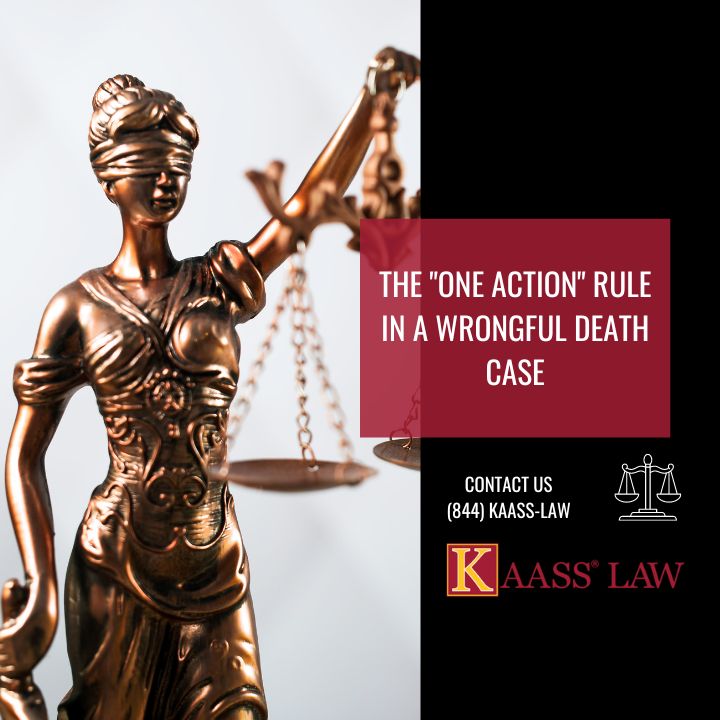The “one action” rule is a legal mechanism that prohibits defendants in wrongful death cases from being sued by different family members more than once in California. The potential heirs must group together to file a single court action, as opposed to several separate lawsuits.
There are a few different ways the process may play out if many plaintiffs file a wrongful death complaint. If all of the plaintiffs agree, they are normally treated as a single claimant.
If the plaintiffs cannot agree, however, two choices exist. The initial course of action is for each plaintiff to bring individual lawsuits through various legal counsel. The “one action” rule prevents multiple lawsuits from different parties against the same party. The alternative is for the plaintiffs to retain independent counsel who then collaborate, a procedure known as a “aggregate demand.”
What is the “One Action” Rule?
If you lose a family member as a result of someone else’s carelessness or recklessness, you can seek monetary compensation for your loss by bringing a wrongful death action. If the dead individual has more than one heir, all prospective heirs must join together in one suit. Due of California’s “one action” rule, the liable party cannot be sued several times by various persons. You may read more about wrongful death litigation in general in a prior post.
According to the “one action” rule, anybody filing a wrongful death claim must include all known heirs as parties to the litigation. The entire family receives the decision and must then determine how to divide it among the heirs. If the family cannot agree on how to divide the money, they can go to court and a judge will decide.
Adding Claimants
The burden to identify and join heirs does not fall on the culpable party, or defendant; rather, it falls on the claimant who files the suit. If the claimant does not join all known heirs, the suit does not fail. Yet, the court has the authority to award comprehensive relief to the parties to those heirs who mistakenly miss the wrongful death case nevertheless have a right to compensation. The omitted heirs have a right to sue the other claims rather than the defendant. This means that the other claims may be liable for the excluded claimant.
It is not necessary to include all qualifying claimants in a wrongful death suit by the personal representative of the wrongful death victim’s person’ estate rather than a family member. Because the personal representative has the capacity to litigate on behalf of all claims, this is the case.
Exceptions to the “One Action” Rule
The filing of wrongful death claims and subsequent lawsuits by survivors is permissible. The issue of several possible plaintiffs is not present in survival lawsuits since the plaintiff is the estate or personal representative of the decedent. In other words, since further family members would not be able to file their own claims, the “one action” criterion does not apply.
There is substantial debate about whether the “one action” rule extends to agreements reached outside of court.
Finding an Attorney
One of the many possible dangers in handling a wrongful death lawsuit is the “one action” rule. Yet, it can offer much-needed recompense and closure. You have the advantage of sympathetic, expert, and aggressive representation when you hire an attorney. Our Los Angeles wrongful death attorneys are able to provide you with the assistance you deserve.
Finding competent heirs is critical in a wrongful death lawsuit. It is critical that you appropriately unite the heirs, as an error might lead to extra legal complications. Call our office today at 310.943.1171 and visit our other website for more information.

